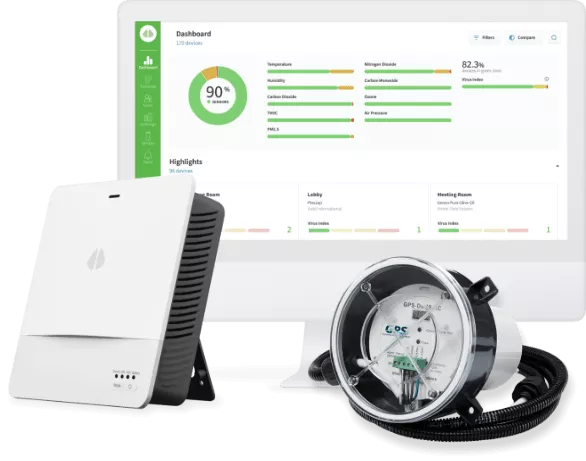The Life Cycle of Air
IAQ Ventilation has designed an 8-stage process for improving the indoor air quality in your building, “The Life Cycle of Air”.
This multi-layered approach to improving indoor air quality recognises that every building is unique and there is no one-size-fits-all solution. Depending on your specific needs, a combination of the right monitoring systems, ventilation, humidity control, HVAC systems and air purification technology can deliver safer, healthier air for your occupants.

1
Define Your Goals
The first step is to define your indoor air quality goals and objectives for your building
We understand that every building and application is unique, so whether you are looking to reduce absenteeism in the workplace, reduce the risk of airborne viruses or exposure to harmful volatile organic compounds (VOC’s), minimise mould growth, or simply want to improve occupant comfort and productivity, the Healthy Buildings Scorecard will help you create a pathway to achieving your indoor air quality objectives.
2
Measure Indoor Air Quality
Real time monitoring of indoor pollutants and environment factors enable building owners to ensure that they deal with issues quickly and proactively, creating safer and more productive environments for workers, residents and visitors.
Documenting risk mitigation and actions to take in the event of elevated pollutant levels ensure that you can respond promptly to issues when they arise, keeping people safe.
3
Improve Ventilation
Ventilation plays an important role in improving indoor air quality. The ability to adjust ventilation rates to match the occupant load ensures sufficient fresh air and pollutant removal while reducing energy consumption during times of low occupancy.
Good ventilation and airflow reduce the spread of contaminants. Dedicated outside air systems ensure minimum outside air rates can be maintained at all time, reducing the risk of poor ventilation arising. Keeping sources of odour, pollution and exhaust air from fresh air intakes prevents recirculation, and keeps systems operating cleanly.
4
Control humidity and moisture
Humidity control prevents the growth of harmful biofilms and microbial growth such as mould and fungus. When the humidity in a building is too high, mould growth and may affect the health of your building occupants. The right level of humidity can also reduce the spread of airborne viruses.
Dehumidifiers and some HVAC systems are designed to balance your building’s moisture levels for better indoor air quality.
5
Optimise HVAC operation
An effective HVAC system can control temperature, ventilation, moisture, and air quality in an indoor environment. On-demand HVAC systems can help you explore energy efficient options to improve your indoor quality and keep your buildings safe.
Building management systems can help automate the process so that you save time, money, and energy. Smart sensors can sense suitable levels of occupancy and warn against pollutants. Fresh air can be introduced into a room through proper ventilation systems. Existing air can be cleaned with air purifiers, filters, and air scrubbers.
6
Clean and Maintain HVAC Hygiene
Healthy indoor environments begin with clean air conditioning, ventilation and related systems. HVAC hygiene involves all aspects of indoor air quality. System monitoring ensures any issues are dealt with quickly and efficiently to create a safer indoor environment.
Preventative maintenance and hygiene ensure your system is operating as designed.
7
Filter Dust and Airborne Contaminants
Filtration is the process of separating particles from the air through filter fibres that trap dust, allergens, and other particles. Air filtration is a critical preventative measure to protect your building occupants as well as your HVAC equipment. Filtration is an essential component of a healthy HVAC system as it makes your system’s job easier – maximising its lifespan and minimising the need for repairs.
8
Air Purification and Air Cleaning to Remove Harmful Particles
Air quality systems such as air purifiers and scrubbers can neutralise and remove airborne pollutants that cannot be captured by the filters, such as mould, bacteria and viruses.
A multi-layered approach to improving indoor air quality is recommended. Depending on your specific needs, a combination of the right air purification technology can deliver safer, healthier air for your occupants. These technologies include needle point bipolar ionization, IVP or UV-C systems.
To benchmark the indoor air quality measures in your building, learn more about the IAQ Ventilation Healthy Buildings Scorecard.
Need help choosing the right indoor air quality solution?
Try our guided product selector to help identify the most suitable indoor air quality or ventilation solution for your project or application.
